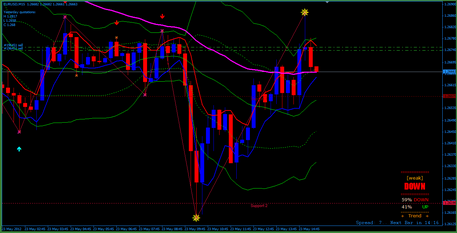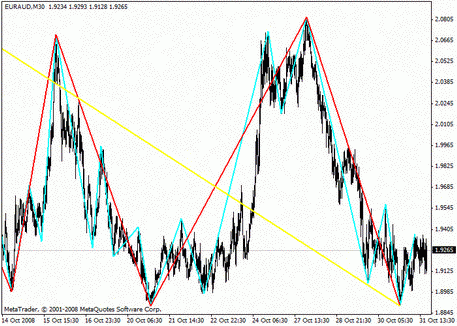
Basic Principles of the Gap Strategy
Wednesday, 26 July 2017 12:09
The gap means an unusually large distance between two candles on the price graph.
Such a gap appears in the case of a large difference between the price the previous candlestick was closed at, and the opening price of the next candlestick. There are two types of gaps:
Weekly gaps are often formed on Monday when the pending orders activate. These orders are made by traders who are active during the interbank days.
Intraday gaps occur when the traders' mood changes dramatically, for example, by the fundamental factors, or significant economic news. This type of gaps is relatively rare.
Strategies that use gaps to earn money on Forex are popular since the gap gives a trader an excellent opportunity to enter the market, and close the position using a fixed stop loss, with predictable take-profit, and a high probability of the successful operation.
Trading on a gap
In practice, after the gap was formed, the price tends to the initial value. If the price returns to the value that it had before the gap was formed, then the gap is called closed. Statistically, more than 70 percent of gaps close. In the case of the weekly gaps, a price return can happen quickly, while the intraday gaps can close for a few days or even weeks. The closure of the gap is caused by the stop losses of the weekend pending orders, which were set close to the Friday closing price.
The strategy based on closing the gap, suggests that the price will return to the initial mark. Different currency pairs show a different percentage of the closing gaps. Therefore, it's important to choose the right currency pair starting to trade.
Find a volatile currency pair. The greatest probability of the gap closing is demonstrated by the following pairs: EUR/USD, GBPJPY, GBP/USD, EUR/JPY. Also worth noting that the EUR/USD pair shows the lowest probability along the pairs listed above, it's about 66% against 70-71%.
Determine the gap size. The size of the gap should be at least 20 points. Smaller gaps make sense to be considered minor fluctuations, and not used at all.
Enter the market. Open the position at least in a half an hour after the trade started. As practice shows, the price moves in the gap direction within 30 minutes after the market was opened. Then you should open the order in the opposite direction.
Determine the take-profit. The take-profit shouldn't be set at the level of the Friday closing price, but slightly above the degree of the nearby maximum, or below the minimum.
Set the stop loss. This task requires a limited accuracy since before the gap closes, the price often shows the significant fluctuations that cannot be predicted. This is caused by the fact that many traders have started trading on such a gap, and major market players get rid of them, triggering the stop-losses standing next to each other.
Using this trading system, we define the value of the stop-loss equal to the take-profit, multiplied by 1.5. If the stop loss is much bigger, the system will lose its profitability, and the lower values increase the chance of the false triggering.
Wait for the gap to close. On this stage, the last one, you should be patient, as closing the gap can take a lot of time, up to a day. For the same reason, a trader should have a quite active deposit.
Summary
Trading on the gap is a simple task, with high profitability and convenience. However, gaps have their drawbacks, just like any other trading strategy. It's worth noting that, despite the large percentage of the closed gaps, some gaps remain open (for example, within the active trend movements); If you look at the history of the price fluctuations for several months, you will see unclosed gaps on the chart for sure.
It should also be taken into account that such gaps occur infrequently, no more than once a week, which excludes the use of such a strategy as the main one, but gives the trader a right tool for the additional earnings on the Forex market.
Share
Related articles
- Previous article: Secrets of Reducing the Drawdowns
- Next article: The Demo account in MetaTrader

 English
English
 русский
русский





